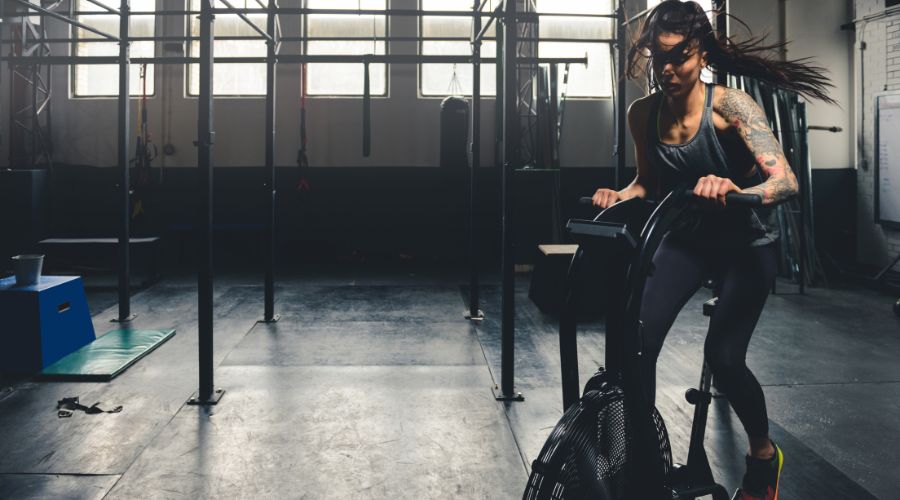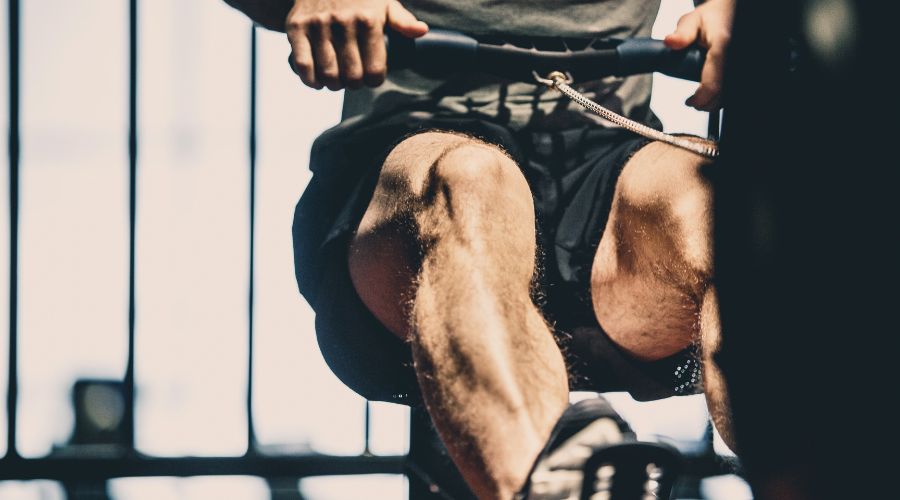Nothing is worse than completely gassing out during a BJJ match or hard roll and wanting to tap out to exhaustion. To significantly reduce the chance of this happening, you need good cardio and conditioning specifically for the demands of jiu-jitsu. But how do you build it?
Most of the cardio for BJJ is built just by training on the mats because BJJ is both a form of cardio and strength training. But additional cardio work will improve your performance. The best way to do it is by doing circuits of drills similar to the movements of BJJ, like double-leg takedowns, sprawls, shrimping, and many others.
There are no two ways to say it: you need good cardio to succeed in BJJ. But how to improve it is a much more complicated topic worth investing in thoroughly.
What Is Cardio For BJJ
Having good cardio for something means being able to perform the sport’s specific movements without fatigue. Or in other words, cardio for BJJ is how long you can grapple without getting exhausted. This also includes strength and muscle endurance, which is called conditioning for BJJ.
At the same time, cardio (coming from cardiovascular) is the capacity and ability of the energy systems. But sticking to the widely accepted terminology, we can say cardio is your overall endurance.
BJJ cardio entails three energy systems: the aerobic and anaerobic systems, meaning with and without oxygen.
It’s essential to understand from the start that all energy systems are working simultaneously and harmoniously with each other, and you can’t separate them with a straight line. That said, specific training methods can target adaptations that occur more in a single system.
BJJ is a sport where all energy systems must work because, in a typical 5- to 10-minute match, there are rest periods, periods with light activity, and periods with intense activity.
Most of the time consists of low-intensity activity, making BJJ more of an aerobic sport. The intensity of the effort determines which system is predominantly supplying the energy. Again, systems don’t just turn on and off; they work the entire time. Depending on the intensity, a different one gives most of the energy.
So, let’s see what each system is responsible for and how this translates for BJJ.
Aerobic System

The aerobic system is your gas tank and is crucial. It allows you to recover in the rest periods between rounds and the periods between high-intensity work. It is the system that recharges the others. The aerobic system can last for hours.
Usually, the aerobic system is developed through a long and steady pace of effort. The most common example, of course, is jogging at a steady tempo. But many other exercises, including BJJ drills and others, force the same adaptations on the heart.
The aerobic system also includes oxygen delivery to the muscles, which is very important for grappling. Aside from a strong heart and lungs, you also need a well-developed delivery system for the muscles to allow them to work for longer.
Anaerobic System
The anaerobic lactic system can work for up to 90 seconds during maximum-effort activity and supplies energy for explosive movements like sprawls, takedowns, and sweeps. The good news is the anaerobic system regenerates much faster than the aerobic system. The bad news is it depletes in a maximum of 90 seconds.
Anaerobic Alactic System
The anaerobic alactic system is where you get the most explosive power. This system lasts only 10 seconds at maximum effort, but during those 10 seconds, you are the most explosive and powerful. Again, the stores are replenished by the aerobic system.
Developing Cardio For BJJ
This talk of energy systems is important, but likely more critical for you is how to develop the cardio for BJJ and make sure you don’t gas out. Trust me, I am all too familiar with the feeling of hopelessness when you are mounted and have no power to resist.
The truth is most of the conditioning occurs within the BJJ training itself. By doing all the drills and sparring, you are creating precisely the adaptations you need in the body to do these same things better and for longer. Additional cardio training is a side dish, as is strength training. They complement the main course rather than replacing it.
Best Cardio Exercises For BJJ

You can use all the familiar cardio exercises like running, swimming, biking, jumping rope, etc. But your time may be more efficiently spent by doing other drills much closer to the movements you will perform while grappling.
This way, you will improve cardio and force other adaptations to the muscles in the legs, the torso, and the arms. You can manipulate the intensity and speed based on your goals.
For example, slow and steady movements will keep the heart rate low and improve aerobic capacity. Doing these same movements in intervals of high intensity and explosively will enhance your ability to work at those intensities. Adjust your effort based on what you want to improve.
Exercises with great crossover and can be done in circuits include shadow wrestling, takedowns, shrimping, technical get-ups, and other similar ones. Here is a great video with a full routine to build exceptional BJJ conditioning:
You can do other similar circuits with a partner. You split the work time into 5-minute rounds and alternate with your partner every rep or every few. Double leg entries, sprawls, pummelling, and other more wrestling-oriented moves are excellent exercises to include.
On the ground, you can do guard passes, escapes from mount, triangle attempts, armbar attempts, and many other drills you’ve already done at the gym, probably not with the specific intention and tempo necessary to build cardio.
Adding bodyweight exercises like lunges, squats, and push-ups is another great way of mixing things up.
Balancing BJJ With Cardio And Strength Training
To have optimal conditioning for BJJ, you need to implement cardio and strength training into your regimen. One of the hardest things is to balance all types of training.
This largely depends on the level and goals of the practitioner, and programming wrong will undoubtedly lead to diminishing returns. Doing too much conditioning work will lead to unnecessary fatigue, reducing the capacity to perform in BJJ training.
While to reach a higher level and be competitive at any level, you need conditioning training, remember that BJJ training takes the top spot.
You may be in the best shape of your life, but this would mean very little if you could not effectively use it on the mats. This is why the most critical aspect is skill efficiency, meaning effectively using your energy and strength while grappling.
You must schedule your cardio and strength training for the BJJ class session. Many people prefer to add cardio in the morning so they have time to recover before the evening BJJ sessions. You should do strength training so it doesn’t interfere too much with BJJ training.
Summary
Cardio for BJJ is the time you can grapple without fatiguing. Most of this is built by just training and doing all the drills and exercises typical for a BJJ practice. However, to further raise the cardio, you can do other exercises.
The classic trio of running, cycling, and swimming are good choices for a cardio workout. Still, some other BJJ and wrestling-specific drills may benefit more than just aerobic and anaerobic capacity.
